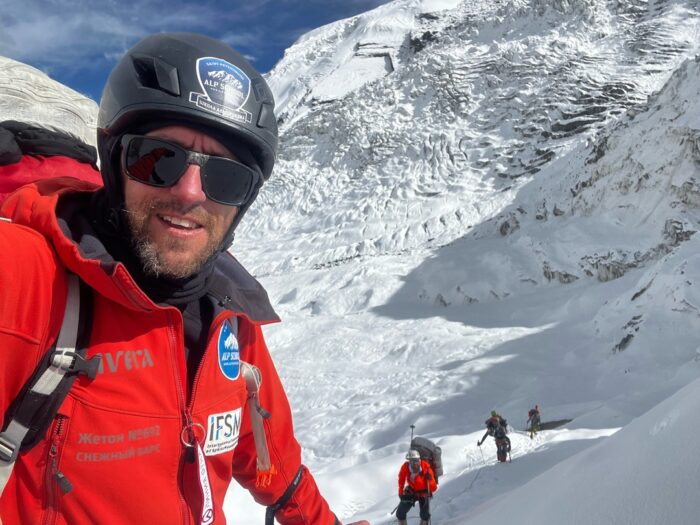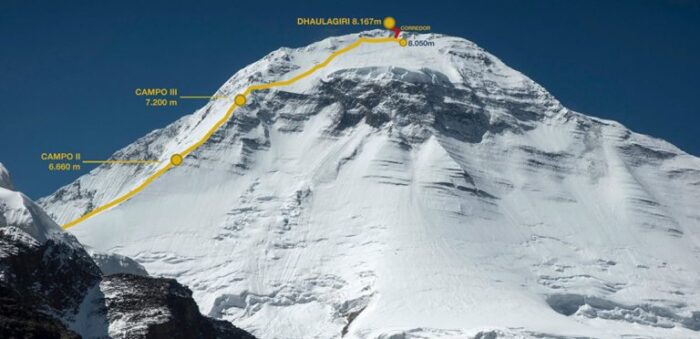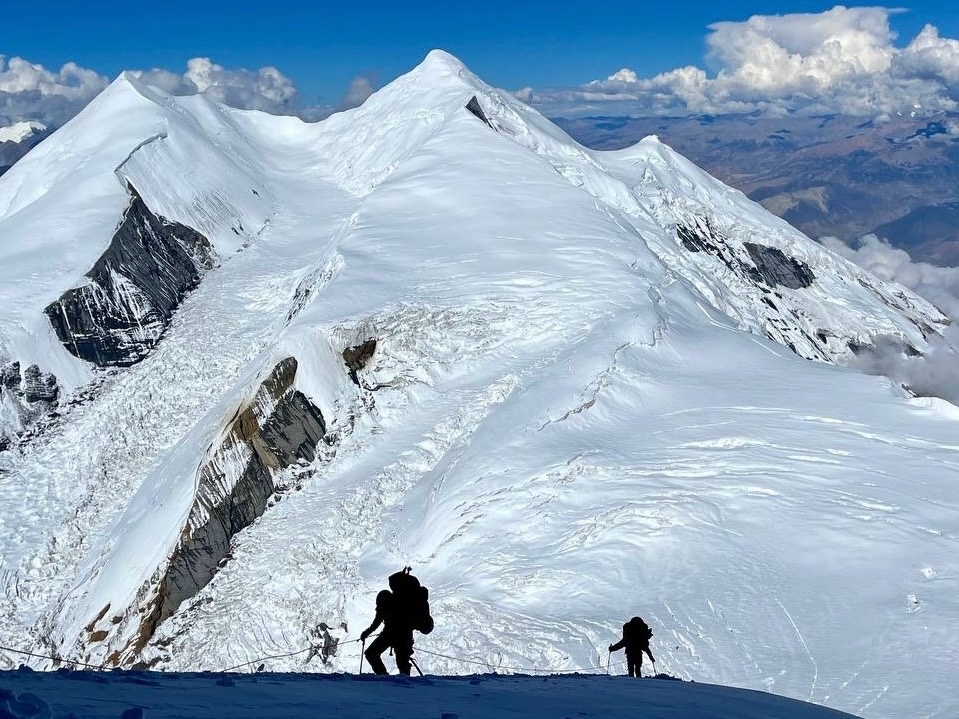The Russian team is done with the fixing and acclimatization work on Dhaulagiri. Next comes a summit push.
The team has set up three high-altitude camps at 6,100m, 6,700m, and 7,240m. They’ve fixed ropes where they considered it necessary. Last weekend, everyone returned to Base Camp in time to shelter from a stormy spell that is now hitting the mountain.

Alexander Dusheiko, the Dhaulagiri expedition leader, with some other team members on the lower part of the mountain. Photo: Alexander Dusheiko
With the mountain to themselves, the expedition has elements of those at the turn of the century. They are climbing in classical expedition style, divided into small groups that work in shifts and rotate up and down the mountain. The team is fixing ropes and pitching their high-altitude camps while acclimatizing at the same time.
They do all the work with no hired local climbers (except for the expedition cook, Lakpa Sherpa), and make their own strategic and tactical decisions. No one on the team is using supplementary oxygen.
Waiting game
Bad weather is their main concern. The forecast predicts snow for the rest of the week. Leader Alexander Dusheiko announced that they would not launch their final push before Sept. 29. This forced four members to end their expeditions because of a lack of time. Luckily, nine more are able to remain. They hope for a summit chance by the end of this week.

Dhaulagiri’s normal route with the three camps and the final traverse to the summit ridge. Photo: Ralf Dujmovits
It will not be a fast push; the forecast announced three meters of fresh snow in four days. This will surely bury their fixed ropes. The climbers will also have to pitch Camp 3 again because the last group who spent a night there retrieved everything and brought it down.
“With loads of snow expected, we may not be able to find it when we go up again,” Dusheiko noted.
The normal route on Dhaulagiri rarely needs more than three high-altitude camps. From the third camp, the climbers need to make a long traverse under the summit ridge until they reach one of the snow couloirs that leads to the summit area. Once there, they only need to make sure they reach the highest point.






